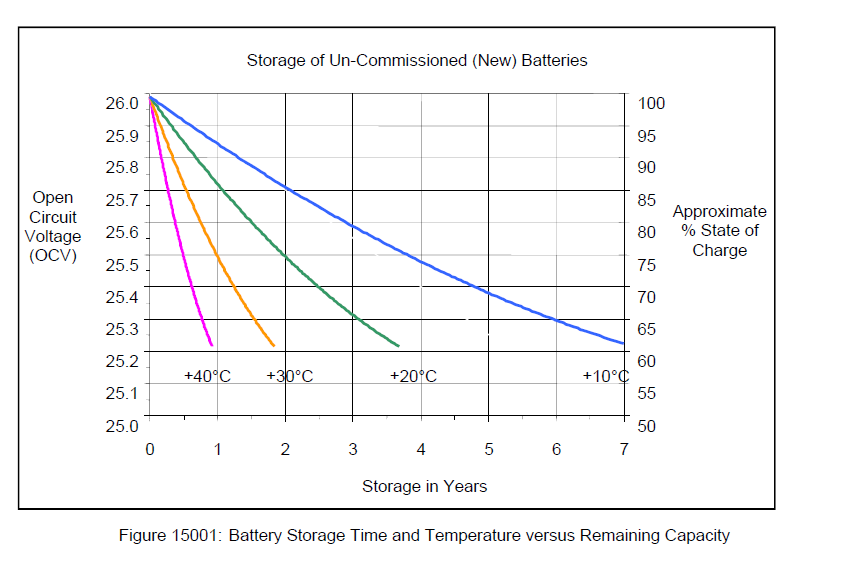
Aircraft batteries are an essential aircraft component, so having spares on hand is crucial. Just as important is not to forget that aircraft batteries have a shelf life and maintenance requirements while in storage.
Aircraft batteries at higher temperatures
Batteries perform better at higher temperatures, between 70°F and 90°F, because the reaction rate increases as the temperature increases. However, these higher temperatures also make the battery lose its stored energy more rapidly due to lower internal resistance.
Aircraft batteries at lower temperatures
Batteries stored at lower temperatures require less maintenance and can be kept longer without attention. The lower the temperature, the more internal resistance and less self-discharge.
Optimizing aircraft battery shelf life while in storage
The chart below demonstrates how the capacity of a sealed lead acid battery changes when stored at various temperatures.

Batteries stored at lower temperatures will keep more of their capacity longer, saving money on maintenance and extending the battery's life, assuming they are fully charged before storage.
After you remove a battery from cold storage, allow it to warm up to the proper operating temperature to achieve maximum performance. A battery stored at 0°F with 100% capacity will only have about 20-25% capacity until it warms up.
All batteries at Duncan Aviation for storage or long-term projects are kept in a cold storage cooler to help maintain capacity levels.
For sales or service on your aircraft’s batteries, contact a Duncan Aviation Component Customer Account Rep at CustomerSalesService@DuncanAviation.com.
November 2025
October 2025
August 2025
July 2025
July 2025